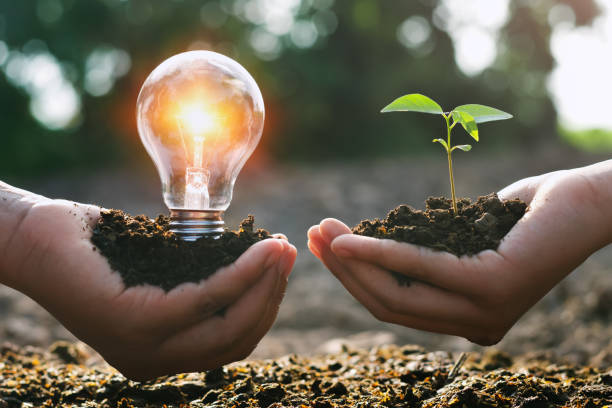Port Heiden is facing an energy crisis. A $300,000 grant from the EPA would have helped the traditional Alutiiq community swap costly, polluting diesel for cheaper, clean power.
Article Published by Grist by Ayurella Horn-Muller
In Port Heiden, Alaska, a small, remote Alutiiq fishing village nestled along the windswept coastline of the Alaska Peninsula, fishing is life. It feeds families, fuels their economy, and preserves a deep cultural tradition. Yet beneath the resilience lies a mounting crisis, one that 10Power, a mission-driven climate justice, gender justice, regenerative, and environmental justice organization, has been working to resolve alongside tribal leaders.
Like many Indigenous communities across Alaska, Port Heiden is caught in a vicious cycle of expensive, polluting diesel dependency. In 2024 alone, this village of fewer than 100 residents spent nearly $900,000 on diesel, almost four times the national average. It powers homes, fishing boats, essential facilities, and even the tribal airport. But the cost is not just financial. Environmental threats from coastal erosion are putting diesel tanks at risk of leaking, while greenhouse gas emissions accelerate the climate instability they face.
Amid these compounding challenges, 10Power partnered with Port Heiden to identify a sustainable path forward: run-of-the-river hydropower. Through months of consultation and deep community engagement, 10Power’s grant specialists co-developed a vision with the community, crafting a compelling application for $300,000 in pre-development funding from the Greenhouse Gas Reduction Fund (GGRF), administered through the national Climate United coalition.
“This wasn’t just a grant application,” said Janine Bloomfield, Grants Specialist at 10Power. “It was a strategic vision, one that could shift an entire village from diesel to resilience, from dependence to energy sovereignty.”
The grant would fund vital topographic and hydrological studies necessary to design two hydropower systems capable of providing clean, renewable electricity to power homes, institutions, and the long-idle community-owned fish processing plant, an economic lifeline that has remained unused for over a decade due to high energy costs.
“Power is 90 percent of the problem,” said John Christensen, Port Heiden’s tribal president. “Cheaper power would keep people here. It would revive our economy.”
The Clean Energy Dream on Hold

In 2023, Climate United secured $6.97 billion in GGRF funding to be distributed to community-led energy transition projects across the country. For Port Heiden, that translated into the $300,000 grant 10Power helped them win, one of nearly two dozen awarded to Native communities.
But that progress came to a halt in early 2025 when former President Donald Trump’s administration moved to rescind all GGRF awards. EPA Administrator Lee Zeldin called the program “criminal,” halting disbursements and prompting Climate United to sue.
For Port Heiden, this freeze meant uncertainty. However, 10Power’s team continued supporting the village, ensuring all documentation was in place so that, if the court ruled favorably, the funds could be rapidly deployed.
“10Power’s role didn’t end with the application,” Bloomfield emphasized. “We’re in constant communication with Climate United and Port Heiden. We’re preparing for all scenarios, because energy security can’t wait.”
Forgivable Loans: A New Strategy Emerges
While the lawsuit remains unresolved, Climate United has proposed a pivot: converting the suspended grants into forgivable loans that do not require upfront capital. If the hydropower project is completed as envisioned, the loans would be fully forgiven.
For 10Power, this shift means doubling down on its role as both technical advisor and trusted partner. The organization is now working with Christensen and other leaders to explore how such a loan structure could be viable, while also building contingency plans for other funding sources, including philanthropy and direct climate finance.
Yet, not all are convinced. Critics, including Chéri Smith of the Alliance for Tribal Clean Energy, warn that loans, no matter how generous, pose risks for Indigenous governments. Pre-feasibility work like hydropower assessments is speculative and, as Smith notes, “Tribes should not be expected to risk even conditional debt to validate whether their own resources can be developed.”
A History of Climate Displacement

Port Heiden’s energy struggle is inseparable from its history. Formerly called Meshik, the village was relocated inland in the 1980s after rising seas swallowed homes and vital infrastructure. Today, the new site faces similar threats as climate change accelerates Arctic warming.
From 2017 to 2018, the community lost up to 65 feet of shoreline in a single year. Even the local school now faces erosion threats. As the land disappears, so too does the population, shrinking over 3% annually as residents seek more affordable places to live.
For Christensen, the solution is clear: “We’re not the biggest polluters, but if we do our part, stop polluting, go renewable, we can survive this. I’m not leaving. My kids aren’t leaving. We have to make this work.”
A Collective Vision for the Future

The hydropower project isn’t just about energy. It’s about food sovereignty, local jobs, intergenerational stability, and cultural survival. Alongside clean power, the community envisions running a greenhouse, extending the growing season, and reducing food costs. These goals are central to 10Power’s mission to bring decentralized, culturally rooted renewable energy to underserved communities.
“This is what we believe in at 10Power,” said Bloomfield. “We’re not here to drop in panels and leave. We co-create the future with communities, one step at a time.”
Even if the grant remains locked in legal limbo, 10Power has pledged to continue walking alongside Port Heiden, leveraging its global climate networks to find new pathways to support the dream.
In Christensen’s words: “We’ll figure it out. I’ll find the money if I have to. I’ll win the lottery and spend it all on clean energy. That’s how much this matters.”

